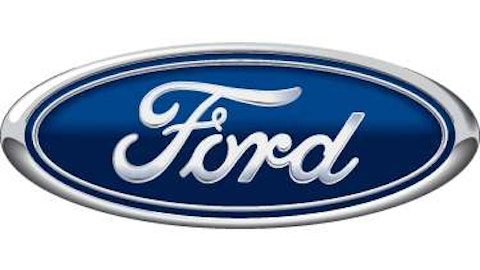On this day in economic and business history…
The Dow Jones Industrial Average (INDEXDJX:.DJI) closed at 381.17 points on Sept. 3, 1929. It was the last day of the greatest uninterrupted bull market the United States has ever seen. Most popular accounts take one of two perspectives to explain the 500% rise in America’s most closely watched market index over the span of eight years. One focuses on the technological innovations, and deservedly so. The other points out that financial innovation went too far, too fast, creating too great an imbalance in the distribution of America’s new prosperity. This criticism is also well-deserved.
We’ll examine both today, touching first on the rapid advances in technology that drove America forward, and later examining in detail the schemes and dreams that brought about a market crash unmatched in history. You might find a few eerie parallels to recent events, but it’s important to remember that each economic cycle is unique, even if some themes crop up more than once. History doesn’t repeat itself, but it does rhyme.
Manufacturing a boom
Certainly there were sound fundamental reasons for stocks to rise for so many years in the 1920s, as many “wise men” reiterated during the market’s mad dash to the end in 1928 and 1929. The flood of new technological products into the marketplace during this time was unprecedented in American history, and at the same time, Americans were becoming more productive than ever before.
A rising tide of productivity seemingly lifted all boats in the Roaring ’20s. Annual total-factor productivity growth (attributed to new technologies and processes), as calculated by Robert Shackleton of the Congressional Budget Office, advanced 3% per year throughout the 1920s, which is roughly triple the annual growth seen in the 1990s. Shackleton’s figures show that the 1920s experienced a higher rate of growth than any other period of American industrial history. Other analyses have similar findings: J.W. Kendrick found that total-factor productivity in the manufacturing sector grew by 5.3% per year during the Roaring ’20s — more than twice the rate of any other major industrial period in American history. Real GDP thus advanced farther during the ’20s than it did during the dot-com decade, even though the average nonfarm employee of the 1920s actually worked slightly fewer hours at the peak of the boom than in the early ’20s.
Automobiles, which had been a niche product during the first decade of the 20th century, had 619,000 recorded registrations nationwide in 1911. Registrations rose to 9.2 million in 1921, and from there to 23.1 million registrations at the end of 1929. With trucks included, the total rises to 26.7 million registered vehicles on American roads at the peak of the boom. Ford Motor Company (NYSE:F) had such an outsized impact on the nation’s manufacturing productivity that its 1927 factory shutdown — which allowed it to finally convert its assembly lines from the venerable Model T to a fresher design — caused measures of American industrial productivity to drop, briefly stoking fears of a recession.

Ford 1924 Model T. Source: Jack Snell via Flickr.
Because Ford Motor Company (NYSE:F) remained a privately held corporation until 1956, it fell to General Motors Company (NYSE:GM) to carry the torch for investors during the Roaring ’20s, and it performed its task admirably. General Motors Company (NYSE:GM) shares began the bull market in August of 1921 priced at $9.63. By August of 1925, the company had become part of the Dow Jones Industrial Average (INDEXDJX:.DJI), and its shares had risen to $22.25 apiece. In 1928, GM surged from $68 in April to $97.94 at the end of the year,
when the market finally caught its breath.
In 1929 General Motors Company (NYSE:GM) became a stock of the people, to the extent possible in those days. A stock split at the start of that year (prices are calculated based on the combined value of all shares resulting from stock splits) drove aggregate ownership in General Motors Company (NYSE:GM) shares to a record-breaking 82,415 shareholders by mid-March. The company was then worth $3.9 billion, and a single share bought at the start of the bull market was worth $111.25. GM finally closed the last day of the bull market, Sept. 3, 1929, with a share price of $89.85. Shareholders who had purchased in 1921 had earned returns of 833%, or 32.2% per year. General Motors Company (NYSE:GM) continued to pay hefty dividends throughout this period — its 1925 dividend yield was nearly 12%, and its 1929 dividend yield remained at 5% even on Sept. 3.





